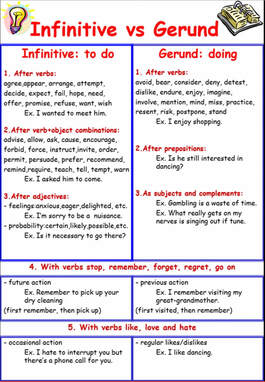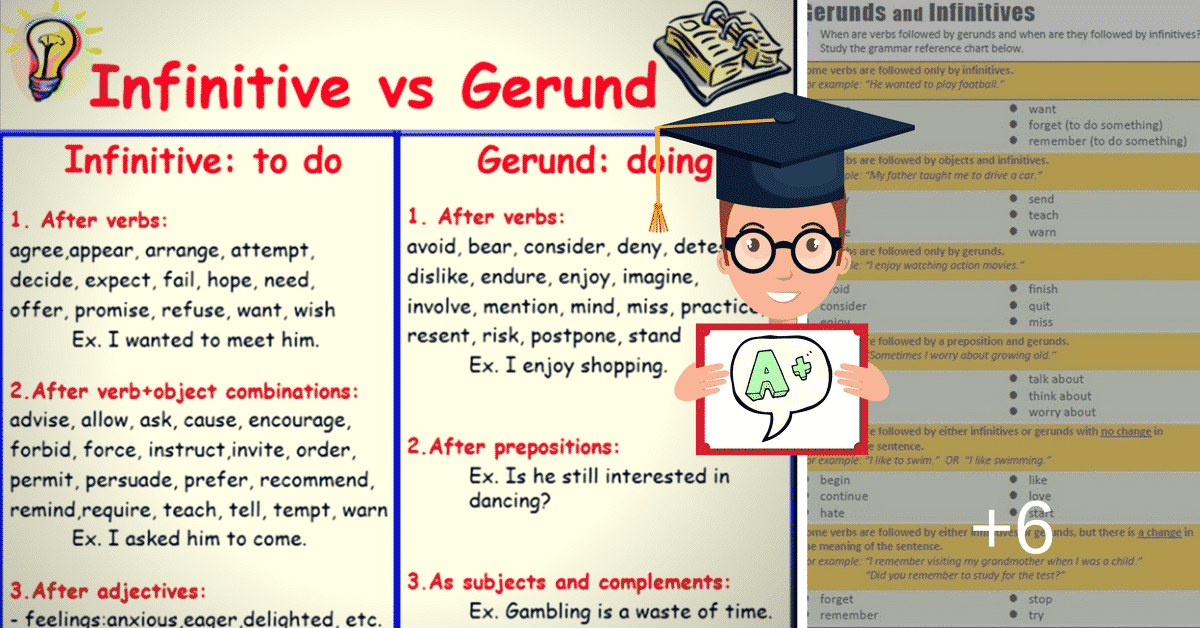 A gerund is not a verb. It is a verb form, and it has an -ing ending (also known as a present participle). Most any action verb can be used as a gerund. An infinitive is the most basic form a verb. It is "to + verb." The infinitive does not act like a verb. Instead it acts like a noun, adjective, or adverb might in a sentence. Both gerunds and infinitives are considered verbals. Sometimes referred to as "verb complements," gerunds and infinitives often follow verbs. When this happens, they are functioning as subjects or objects. To learn more about gerunds and infinitives and to practice using them correctly, click on this link: Englishpage.com. Other helpful resources on this topic:
 [The following excerpt is from https://learningenglish.voanews.com] "English learners have difficulty with gerunds and infinitives. A gerund is the –ing form of a verb that functions the same as a noun. For example, “Running is fun.” In this sentence, “running” is the gerund. It acts just like a noun. The infinitive form of a verb appears either as the basic form (with no marking) or with the word “to.” For example, you can say “I might run to the store” or “I like to run.” In this sentence, “to run” is the infinitive." To read more about Gerunds and Infinitives click here. Want to practice using and identifying these important verbals? Practice 1 Practice 2 Practice 3  A verbal may sound cute and fuzzy, but it can be a real challenge to English language learners at times. But what are they and how do I make one? When do I use a verbal? And, do I need to use a comma when I use a verbal? These are all good questions. Let's start by considering what a verbal is. A verbal is simply a verb form that functions as something other than a verb in a sentence. Verbals can be subjects of a sentence, objects of a verb, complements, or even adjectives or adverbs. How do I make a verbal? Verbals are formed by one of the 4 principle parts of a verb.. They may use the base form of the verb (i.e. infinitives use "to + base form"), the present participle (-ing form), or past participle (sometimes -ed). There are three types of verbals: gerunds, infinitives, and participles. To read more about verbals and how to punctuate them, clink on the links below. Verbals 1 Verbals 2 Participles and Punctuation To practice using and identifying verbals, click on these links: Verbal Practice 1 Verbal Practice 2 Verbal Practice 3 |
AuthorMy name is Craig, and I've been teaching English for many years. I initially created this site for my students, but all English learners are welcome. I hope you find something helpful to you. Feel free to leave suggestions or ideas in the Comments section under any entry. Categories
All
|
